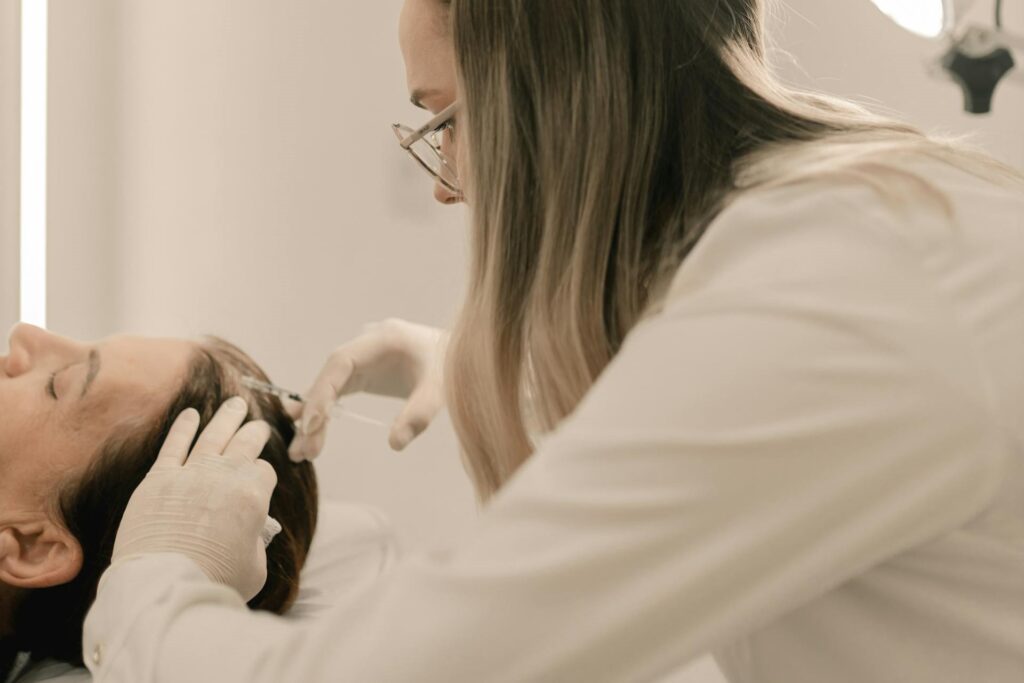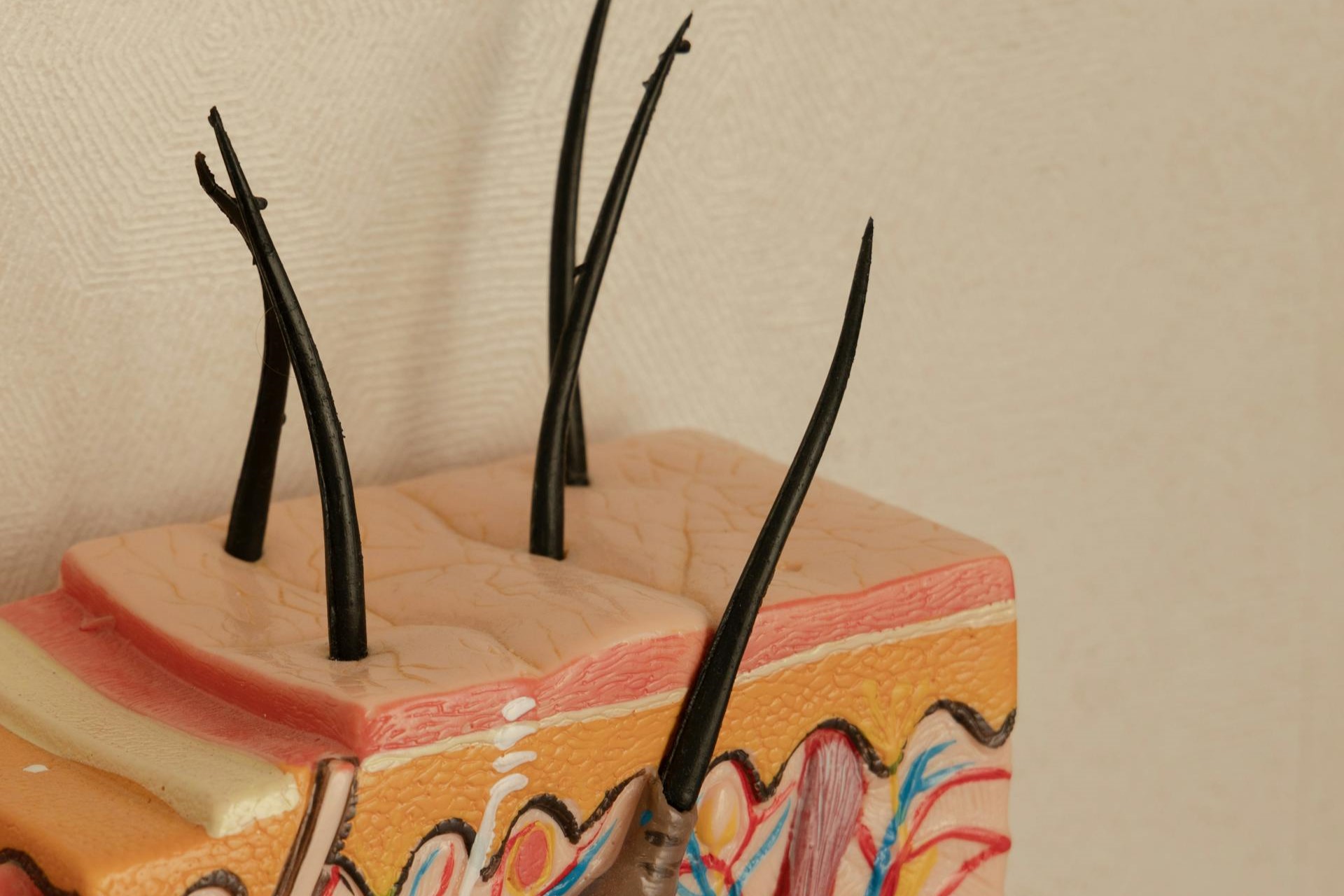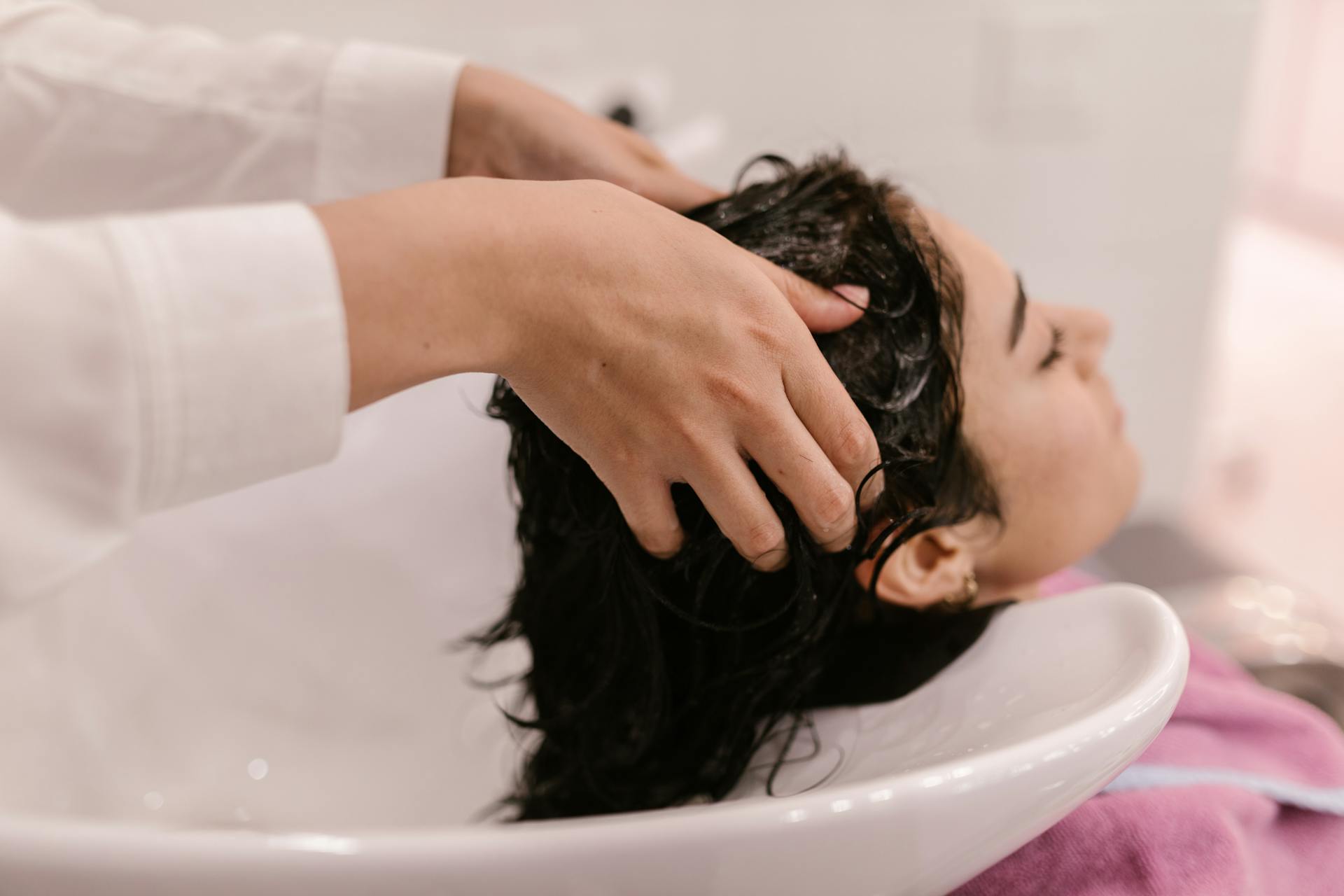
Hair loss can be quite a distressing experience, prompting many individuals to look for effective solutions to restore their hair. This article delves into the realm of hair restoration therapy, outlining its various types, which include medications, laser treatments, and hair transplant surgery.
We will evaluate the advantages and disadvantages of these professional options before transitioning to the world of DIY hair loss treatments. Here, we will assess their effectiveness and risks, as well as how to select the most suitable approach based on individual needs.
Whether one is dealing with thinning hair or simply looking to enhance their hairstyle, this comprehensive guide between hair restoration therapy vs DIY hair loss treatments aim to assist in navigating the available choices.
What Is Hair Restoration Therapy?

Hair restoration therapy includes a range of treatments focused on reversing hair loss and encouraging hair regrowth. It specifically addresses conditions such as androgenetic alopecia, female pattern hair loss, and male pattern baldness.
This area of therapy offers both non-invasive and surgical options aimed at stimulating hair follicles, improving scalp health, and enhancing the overall quality of hair for those experiencing thinning.
As modern techniques and holistic approaches gain popularity, it is essential for anyone looking for effective solutions to their hair loss concerns to understand the various options available.
What Are the Different Types of Hair Restoration Therapy?
There are various types of hair restoration therapies available, each presenting unique methods to address hair loss and encourage hair regrowth.
Individuals can consider options ranging from medications like minoxidil and finasteride to advanced surgical procedures such as hair transplants.
Additionally, non-invasive treatments, including laser therapy and PRP therapy, have gained popularity. These alternatives focus on stimulating hair follicles and enhancing scalp health without requiring surgical intervention, allowing individuals to choose effective treatments that suit their specific needs.
1. Medications
Medications play a crucial role in hair restoration therapy, with well-known options such as minoxidil and finasteride providing effective solutions for those dealing with hair loss. These medications function through various mechanisms, including promoting blood flow to the scalp and blocking DHT, a hormone associated with hair thinning.
Many individuals have reported positive outcomes in terms of hair regrowth by incorporating these treatments into their hair care routines.
Beyond these popular options, there are several other treatments available for hair loss, such as platelet-rich plasma (PRP) therapy and low-level laser therapy (LLLT), each employing distinct operational methods.
Clinical studies have indicated that PRP can stimulate hair follicles by utilising the body’s natural growth factors, while LLLT applies light energy to the scalp to enhance cellular activity.
While these therapies can indeed be effective, they may also come with side effects, which can range from mild irritation to more significant discomfort. User experiences tend to vary greatly; some individuals report remarkable results, while others advise caution.
This variability emphasises the importance of conducting thorough research and engaging in discussions with healthcare professionals to evaluate individual suitability for these treatments.
2. Laser Therapy
Laser therapy has become a widely recognised non-invasive treatment in the field of hair restoration, employing low-level lasers to stimulate hair follicles and enhance scalp health. This therapy aims to improve blood circulation in the scalp, which can increase the likelihood of hair regrowth for individuals experiencing various types of hair loss.
Many users have shared positive experiences and noticeable results, making laser therapy an attractive option for those interested in exploring modern approaches to hair restoration.
The effectiveness of this treatment is backed by a growing body of research that demonstrates its ability to promote hair thickness and density. There are various laser devices available for home use, allowing individuals to conveniently integrate therapy into their daily routines. In contrast, professional treatments often employ more advanced technology for even better outcomes.
Patient testimonials frequently highlight remarkable before and after transformations, often compared to traditional methods like hair transplants or medications. These distinct advantages contribute to the increasing popularity of laser therapy, especially among those seeking a less invasive route to rejuvenating their hair.
3. Hair Transplant Surgery
Hair transplant surgery is a surgical procedure that involves relocating hair follicles from one area of the body to regions experiencing hair thinning or baldness. This method has gained recognition for its long-lasting results and natural-looking outcomes, making it a preferred option for individuals dealing with more significant hair loss issues.
While the procedure can be remarkably effective, it is essential for potential candidates to consider factors such as recovery time, the frequency of sessions, and the expertise of the hair restoration clinic.
Understanding the various techniques available can further assist individuals in making an informed decision.
- Follicular Unit Transplantation (FUT) involves extracting a strip of skin from the donor area.
- Follicular Unit Extraction (FUE) entails the extraction of individual hair follicles directly.
Each technique presents its own advantages and disadvantages, particularly concerning scarring and recovery time.
The potential costs of hair transplant surgery can vary widely, ranging from a few thousand pounds to over ten thousand pounds, depending on the extent of hair loss and the method chosen.
After the surgery, patients typically follow maintenance routines to enhance their results, and overall satisfaction levels tend to be high. This satisfaction is often attributed to an increase in self-esteem and the natural appearance achieved through hair restoration.
What Are the Pros and Cons of Hair Restoration Therapy?

Hair restoration therapy offers a range of advantages and disadvantages that individuals should thoughtfully evaluate before beginning their journey to address hair loss.
On the positive side, many treatments, such as medications and surgical procedures, have shown effectiveness in promoting hair regrowth and enhancing overall hair quality. However, it is equally important to consider potential side effects, the duration of treatment, and associated costs of hair restoration theraphy.
These factors must be carefully weighed against the expected outcomes when choosing the most appropriate solution for hair loss.
Pros:
One of the primary advantages of hair restoration therapy is its established effectiveness in promoting hair growth, which allows individuals to regain their confidence and enhance their overall appearance. Many users have reported significant improvements in hair density and quality, leading to a notable boost in self-esteem and emotional well-being.
This transformation extends beyond mere aesthetics; it often brings about a renewed zest for life and improved social interactions. Clinical studies indicate that patients undergoing hair restoration can witness dramatic before-and-after results, with some experiencing up to a 70% enhancement in hair thickness.
Testimonials suggest that these changes contribute to more than just physical improvements. Individuals frequently express that they feel more attractive in social situations, positively impacting both their personal and professional lives.
As they observe the gradual regrowth and better health of their hair, many report a greater satisfaction with their overall appearance. This ripple effect of positive outcomes highlights the multifaceted benefits of hair restoration therapy.
Cons:
While hair restoration therapy offers a variety of benefits, it is essential for individuals to be aware of certain drawbacks before embarking on treatment. Potential side effects, such as scalp irritation or unintended hair growth in other areas, can occur.
Additionally, the costs associated with ongoing treatments or surgical procedures can be significant, often requiring a considerable time commitment for maintenance.
For many individuals, the financial burden can lead to stress, especially when the desired results may take time to manifest. Lengthy recovery periods and the need for multiple sessions can also be sources of frustration.
To address these challenges, individuals might consider exploring cost-effective home remedies, such as natural oils or topical treatments that promote hair health.
Alternative therapies like acupuncture and herbal supplements are increasingly popular among those seeking a more holistic approach.
By combining these methods with professional therapy, one may achieve satisfactory results while minimising both side effects and financial strain.
What Are DIY Hair Loss Treatments?

DIY hair loss treatments have become increasingly popular among those seeking natural remedies for hair thinning and regrowth.
These treatments typically involve using essential oils, herbs, and homemade mixtures aimed at nourishing the scalp and stimulating hair follicles.
As more individuals show interest in home care methods, many are considering these alternative therapies as supplements or complements to professional treatments.
What Are the Most Common DIY Hair Loss Treatments?
Some of the most common DIY hair loss treatments include essential oils like rosemary and lavender, as well as natural remedies such as aloe vera and coconut oil. These treatments are often paired with nutritional support, which may include vitamins such as biotin and various hair growth serums, to enhance their effectiveness on scalp health and hair follicles.
Many individuals have reported significant improvements in hair thickness and overall health after consistently using these remedies. For example, numerous users have praised rosemary oil for its ability to stimulate blood circulation in the scalp, promoting stronger roots and reducing hair shedding.
Incorporating a balanced diet that is rich in vitamins A, C, D, and E, along with essential minerals such as zinc and iron, is crucial in maintaining healthy hair. Testimonials indicate that simple dietary changes, combined with these DIY treatments, can foster a holistic approach to addressing hair loss, enableing many to restore their confidence.
Do DIY Hair Loss Treatments Actually Work?
The effectiveness of DIY hair loss treatments can vary significantly from one individual to another, leading many to question whether these natural remedies truly produce meaningful results. While some users share positive experiences and report improvements in hair density and overall health, the scientific evidence supporting these treatments tends to be limited. As a result, outcomes can be quite subjective, influenced by each person’s unique response.
This variability calls for a careful consideration of user testimonials alongside scientific studies, suggesting that expectations should be managed when exploring these alternative solutions. For some individuals, herbal mixtures such as saw palmetto or essential oils may offer a modest enhancement, particularly when used in conjunction with established therapies.
However, it is essential for users to approach these DIY remedies with a clear understanding of their limitations and to maintain realistic expectations regarding the possible outcomes. In many instances, integrating these natural options with professional treatments can foster a holistic approach to addressing hair loss. This allows individuals to explore a personalised treatment plan tailored to their specific needs and goals.
What Are the Risks of DIY Hair Loss Treatments?
While DIY hair loss treatments may seem appealing thanks to their natural ingredients, it is important to recognise the risks that come with them. Users should be mindful of potential side effects, such as allergic reactions or scalp irritation, which can occur if treatments are not properly researched or applied.
Individuals who choose the DIY route often underestimate the significance of understanding how specific substances interact with their unique skin types or medical histories. Misapplication or overly ambitious home concoctions can lead to additional hair damage or worsen existing conditions, transforming a pursuit of restoration into a frustrating setback.
Thus, thorough research is essential. Users should explore various methods and seek reliable sources of information. Consulting healthcare professionals, particularly dermatologists or trichologists, can offer personalised advice that considers individual health needs, ultimately ensuring safe and effective treatment outcomes.
How Can Someone Determine the Best Treatment for Their Hair Loss?

Determining the most appropriate treatment for hair loss requires a careful evaluation of several important factors. These include the severity of hair loss, its underlying causes, and individual budget considerations.
By gaining a clear understanding of the extent of their hair thinning or baldness, individuals can more effectively assess the most suitable solutions available to them—whether that be medications, surgical interventions, or even do-it-yourself treatments—tailoring their choices to their specific situations.
1. Severity of Hair Loss
Assessing the severity of hair loss is a vital first step in determining the most suitable treatment plan, as different conditions, such as androgenetic alopecia and traction alopecia, can exhibit distinct characteristics. Understanding the extent of hair thinning and the specific areas affected can help individuals find the most effective hair restoration solutions tailored to their unique needs.
Visual assessments, such as examining the scalp under various lighting conditions or utilising trichoscopy, can offer valuable insights into the health and density of the hair. Consultations with hair care professionals or dermatologists facilitate a thorough evaluation, taking into account both medical history and lifestyle factors.
Recognising the different types of hair loss—whether it involves shedding, thinning, or patchiness—is essential, as this directly influences the selection of treatment options ranging from topical solutions to advanced surgical interventions.
These detailed assessments ensure that individuals are not only informed about their condition but also equipped with personalised strategies for achieving the best possible outcomes.
2. Underlying Causes of Hair Loss
Understanding the underlying causes of hair loss is crucial for selecting the most effective treatment. Factors such as hormonal changes, genetics, and stress can significantly impact hair health.
By identifying these root causes, individuals can tailor their approach to hair restoration, which may enhance the effectiveness of the therapies they choose.
In many instances, hereditary patterns are a significant factor, influencing the likelihood of hair thinning in both men and women. Hormonal imbalances, such as those caused by thyroid disorders or the menopause, can also disrupt hair growth cycles.
Additionally, lifestyle factors such as poor nutrition, insufficient sleep, and high stress levels can adversely affect the overall health of hair follicles. By recognising these various contributors, individuals can adopt a comprehensive strategy that addresses not only the symptoms but also the underlying issues.
This holistic approach can ultimately lead to more successful outcomes in their hair restoration journey.
3. Budget and Time Commitment
When contemplating hair restoration treatments, it is essential to evaluate both your budget and the time commitment involved to make informed decisions. The costs of various treatments can range widely, from affordable DIY solutions to more expensive surgical options. Additionally, understanding the long-term maintenance required is crucial for ensuring sustainability.
To effectively navigate these choices, individuals should begin by outlining their financial limits and availability of time. For example, over-the-counter topical solutions may require only a modest financial investment, but they often necessitate daily application for several months before results become visible.
On the other hand, surgical procedures such as hair transplants typically involve a significant upfront cost and a longer recovery period. Therefore, it is important to consider whether you can accommodate this within your schedule.
Furthermore, ongoing maintenance—whether through periodic clinical treatments or additional products—should be included in the overall cost analysis to avoid any unexpected expenses in the future.
Frequently Asked Questions
What is the difference between Hair Restoration Therapy vs DIY Hair Loss Treatments?
Hair Restoration Therapy is a professional treatment done by a trained and licensed specialist, while DIY Hair Loss Treatments refer to at-home remedies or products used without professional assistance.
Which option is more effective for treating hair loss?
Hair Restoration Therapy is generally more effective as it is tailored to each individual’s specific needs and utilises advanced technology and techniques. DIY treatments may provide temporary results but may not address the underlying cause of hair loss.
What are the potential risks of DIY Hair Loss Treatments?
DIY Hair Loss Treatments may pose risks such as skin irritation, allergic reactions, or exacerbation of hair loss if used incorrectly or with harsh ingredients. It is important to consult with a professional before attempting any DIY treatments.
Are DIY Hair Loss Treatments cheaper than Hair Restoration Therapy?
In the short term, DIY Hair Loss Treatments may seem more cost-effective, but they may not provide long-lasting results. Hair Restoration Therapy may require a larger upfront investment, but it can save money in the long run by providing effective and long-lasting results.
Can Hair Restoration Therapy and DIY Hair Loss Treatments be used together?
It is not recommended to use both Hair Restoration Therapy and DIY Hair Loss Treatments together without consulting a professional. This can lead to overlapping treatments and may cause more harm than good.
How do I know if Hair Restoration Therapy is right for me?
If you are experiencing significant hair loss or thinning and have not seen improvement with DIY treatments, Hair Restoration Therapy may be a good option for you. Consult with a specialist to determine the best course of treatment for your specific hair loss needs.





